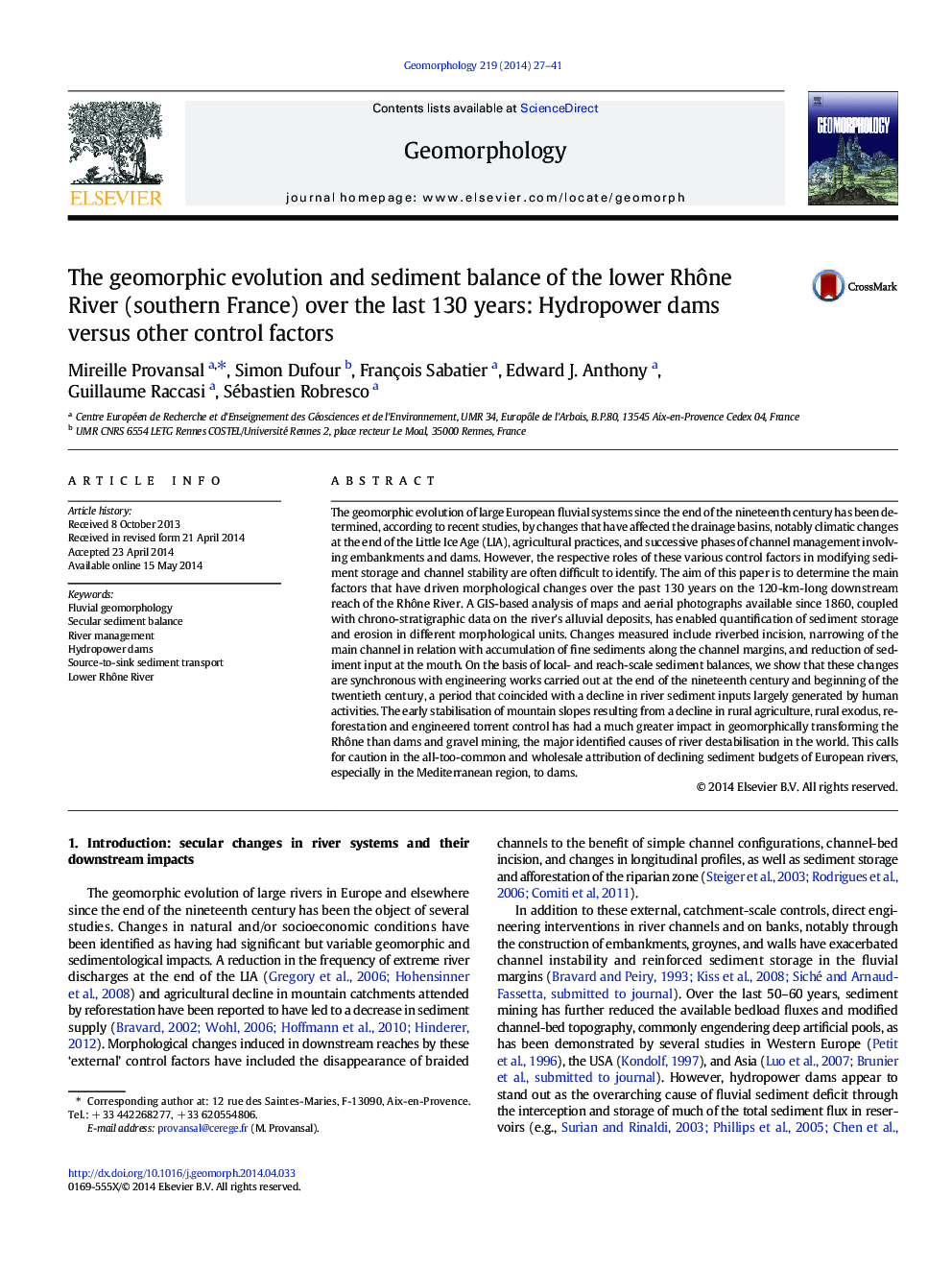| کد مقاله | کد نشریه | سال انتشار | مقاله انگلیسی | نسخه تمام متن |
|---|---|---|---|---|
| 6432445 | 1635430 | 2014 | 15 صفحه PDF | دانلود رایگان |

- Geomorphic changes and a 130-year sediment budget are shown for the lower Rhône River.
- Sediment supply reduction to the river mouth over the last 130Â years has been drastic.
- The role of dams versus other control factors on the sediment budget is analysed.
- Early river navigation works and catchment changes are the main control factors.
- Hydropower dams have had hardly any impact on the lower Rhône's sediment budget.
The geomorphic evolution of large European fluvial systems since the end of the nineteenth century has been determined, according to recent studies, by changes that have affected the drainage basins, notably climatic changes at the end of the Little Ice Age (LIA), agricultural practices, and successive phases of channel management involving embankments and dams. However, the respective roles of these various control factors in modifying sediment storage and channel stability are often difficult to identify. The aim of this paper is to determine the main factors that have driven morphological changes over the past 130 years on the 120-km-long downstream reach of the Rhône River. A GIS-based analysis of maps and aerial photographs available since 1860, coupled with chrono-stratigraphic data on the river's alluvial deposits, has enabled quantification of sediment storage and erosion in different morphological units. Changes measured include riverbed incision, narrowing of the main channel in relation with accumulation of fine sediments along the channel margins, and reduction of sediment input at the mouth. On the basis of local- and reach-scale sediment balances, we show that these changes are synchronous with engineering works carried out at the end of the nineteenth century and beginning of the twentieth century, a period that coincided with a decline in river sediment inputs largely generated by human activities. The early stabilisation of mountain slopes resulting from a decline in rural agriculture, rural exodus, reforestation and engineered torrent control has had a much greater impact in geomorphically transforming the Rhône than dams and gravel mining, the major identified causes of river destabilisation in the world. This calls for caution in the all-too-common and wholesale attribution of declining sediment budgets of European rivers, especially in the Mediterranean region, to dams.
Journal: Geomorphology - Volume 219, 15 August 2014, Pages 27-41